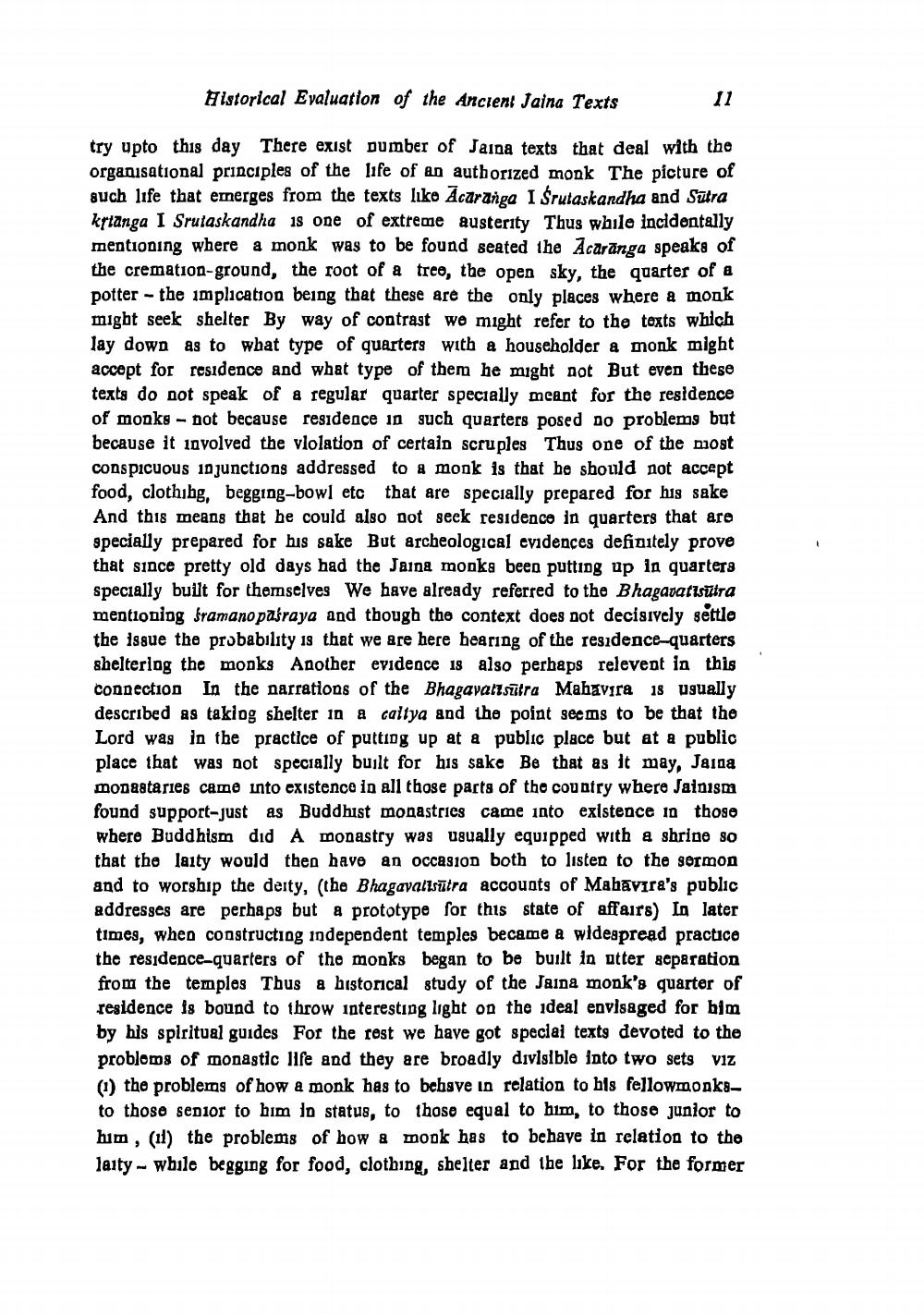________________
Historical Evaluation of the Ancient Jaina Texts
try upto this day There exist bumber of Jaina texts that deal with the organisational principles of the life of an authorized monk The picture of such life that emerges from the texts like Acaranga I Śrutaskandha and Sutra kylanga I Srutaskandha is one of extreme austerity Thus while incidentally mentioning where a monk was to be found seated the Acaränga speaks of the cremation-ground, the root of a tree, the open sky, the quarter of a potter - the implication being that these are the only places where a monk might seek shelter By way of contrast we might refer to the texts which lay down as to what type of quarters with a householder a monk might accept for residence and what type of them he might not But even these texts do not speak of a regular quarter specially meant for the residence of monks - not because residence in such quarters posed do problems but because it involved the violation of certain scruples Thus one of the most conspicuous injunctions addressed to a monk is that he should not accept food, clothibg, begging-bowl etc that are specially prepared for his sake And this means that he could also not seek residence in quarters that are specially prepared for his sake But archeological evidences definitely prove that since pretty old days had the Jaina monka been putting up in quarters specially built for themselves We have already referred to the Bhagavattsūtra mentioning framano pasraya and though the context does not decisively settle the issue the probability is that we are here bearing of the residence-quarters shelterlog the monks Another evidence is also perhaps relevent in this connection In the narrations of the Bhagavalı sütra Mahavira 18 usually described as takiog shelter in a caltya and the point seems to be that the Lord was in the practice of putting up at a public place but at a public place that was not specially built for his sake Be that as it may, Janda monaataries came into existence in all those parts of the country where Jainism found support-just as Buddhist monastries came into existence in those where Buddhism did A monastry was usually equipped with a shrine so that the laity would then have an occasion both to listen to the sormon and to worship the derty, (the Bhagavalısūtra accounts of Mahāvıra's public addresses are perhaps but a prototype for this state of affairs) In later times, when constructing independent temples became a widespread practice the residence-quarters of the monks began to be built in atter separation from the temples Thus a historical study of the Jaina monk's quarter of residence is bound to throw interesting light on the ideal envisaged for him by his spiritual guides For the rest we have got special texts devoted to the problems of monastic life and they are broadly divislble into two sets viz (1) the problems of how a monk has to behave in relation to his fellowmonksto those senior to bim lo status, to those equal to him, to those junior to him, (11) the problems of how & mook has to behave in relation to the laity - wbile begging for food, clothing, shelter and the like. For the former




